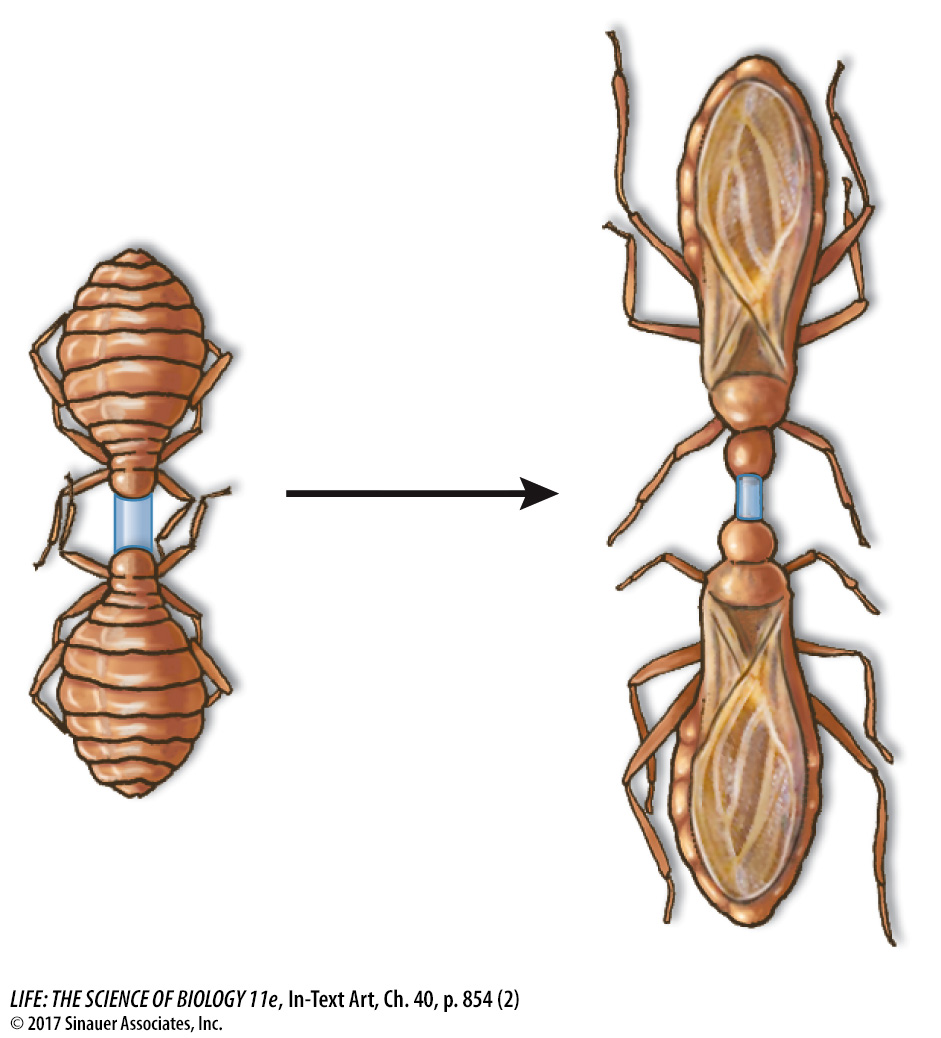Experiments on insect development revealed hormonal signaling systems
Pioneering experiments of hormonal action and control in insects were done on the bloodsucking bug Rhodnius prolixus, which undergoes incomplete metamorphosis. Newly hatched Rhodnius lack certain adult features and molt five times before developing into a mature adult. A blood meal triggers each episode of molting and growth. Rhodnius is an amazingly hardy experimental animal—

This observation suggested that molting was triggered by some substance slowly diffusing from the head. To test this hypothesis, two decapitated bugs–

Since those pioneering experiments on Rhodnius, the chemical nature of the diffusible substances (hormones) controlling molting in arthropods have been identified and their functions described.